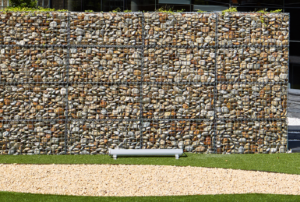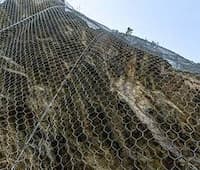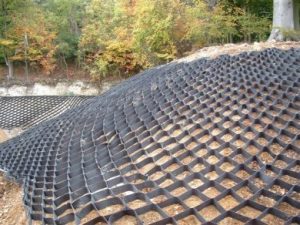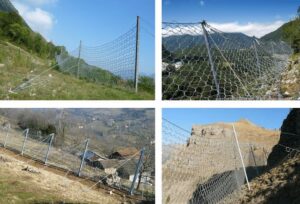What is the Cost of a Gabion Wall?

The term “gabion“ arrives from an old Italian word, gabions, which means “big cage“. Nearly 7000 years ago, early gabion-type structures averted the bank of the river Nile. In the middle ages, gabions were utilized as military forts. In earlier history, civil engineers have widely used gabions for the stabilization of banks, streams, highways, and erosion control of slopes. Against the banks of the River Nile, where they were constructed up to today, gabion walls are an aid for the landscape. It is utilized for thousands of years as a gravity-type retaining structure and builds an attractive, efficient, and cheap wall system.
Gabion walls are accomplished mainly for soil stabilization behind the wall, but they can also be done as a cover wall. The wall is made from gabion baskets that are deformed in one or more rows, based on the height of the wall. Baskets have a cage shape and are sealed on all sides. They are constructed from galvanized hexagonal meshes and broken rock that are placed in the baskets. Retaining structures are built up by stacking gabion baskets in a proper schedule and displaying an alternative solution for concrete structures in the area of soil stabilization.
Table of Contents
APPLICATIONS
- Retaining wall Designs
- River and canal practice
- Erosion and scour prevention; roadway prevention; bridge prevention
- Hydraulic systems, dams, and culverts
- Coastal embankment purposes
- Rockfall and soil erosion prevention
- Architectural covering for walls and buildings
- Freestanding walls, noise, and environmental boundaries
- Architectural Gabion Purposes
Benefits of Gabion Walls
• Aesthetic – Gabion walls look natural and by utilizing natural materials fit into the environment.
• Compatibility with the environment – Utilizing the material built by excavations the costs of acquisition and transport are significantly reduced.
• Is used as a cooling system in hot climate conditions and maintain passive cooling by air movement.
• Water penetrability – Gabion walls are penetrable and are not damaged by passing water.
• Adaptability of gabion walls can increase in the time since the vegetation fills voids and strengthens the wall structure.
• Longevity – Stone blocks are materials that are often used because of their longevity, endurance, and stability. Generally, the stone is selected because of aesthetic attributes or the possibility of excavation-produced material usage.
Soil movements don’t negatively regulate gabion walls, which is an advantage concerning stiffer structures (reinforced concrete walls)
General gabion basket dimensions are 2,0 x 1,0 x 1,0 m. Galvanized mesh has a hexagon shape with the eye size X x Y = 8,0 x 10,0 cm.
How much does a Gabion Retaining Wall Cost?
Several factors will shape the cost of your gabion retaining wall, specifically:
- Size and scale
- Height
- Stones applied
- Structure and consultant’s fees
- Excavation and drainage necessity
Of these, Gabion retaining wall price is based on two main factors – The stones you apply and the size and complexity of the wall. Recall in mind that building a gabion retaining wall is a labor-intensive exercise, hence; factor this into your budget. The type of stones will also influence the final cost, as will the gabion retaining wall design: a curved design tends to cost more than a straight one.
The Benefits of Having Gabions
1. Flexibility
One of the main reasons that gabion walls have stood the test of time – ever since they were utilized on the banks of the River Nile – was that they are excessively flexible and strong. Under high stress, a gabion basket will contort, buckle or compress very lightly, instead of break. This is a functional feature that protects against loss of structural integrity and ultimately makes it stronger across time. Plus, not being fixed to the ground (such as a normal wall would be) means there will be an allowance for all the small ground movements which happen originally.
2. Strength
Though it may not look it, the wire mesh that makes up the basket or cage is very bold under tension and function as a reinforcement of the overall structure, instead of just a container. And due to silt and vegetation collecting in between the filling across time, they become even bold with age and made a naturally permanent structure. Many people have taken benefit of this fact to use gabion baskets as a base for tables and benches.
3. Permeable
The nature of the way gabion baskets are produced means there is space in between the stone filling. This lets both air and water pass through, which allows the complete structure to breathe. On the other side, concrete systems can build up hydrostatic pressure due to their impermeability, and this can accord their structural integrity.
4. Cost-effective
Create from wire mesh, gabion baskets are less expensive than most construction materials such as concrete and can be put together simply by anyone, avoiding the requirement to buy heavy concrete or mix it yourself. Filling like stone or broken concrete can typically be sourced locally and at a much lesser cost.
5. Firm Base
One of the key benefits of gabion walls over traditional walls is that you don’t require a conventional foundation – a compacted layer of filling like crushed rock is sometimes all that is required to provide the baskets a firm footing. You may think that translates to the base not being firmly seeded in the ground, but this isn’t the situation. As long as you’ve leveled and prepared the ground to put the wall on, the fill at the end of the basket will settle into the ground directly, providing frictional strength which keeps the baskets in place and protects the structure from being dragged away by a river or stream.
6. Reduce Erosion
The prime benefit and practical utilization for gabion walls, as cited above, is to reduce or protect erosion. This function by absorbing the force of flowing water, as the energy is consumed by the stone fill, thus preventing areas at risk of erosion. For this cause, they’re utilized to bolster river banks and coasts that are under threat of erosion. In case you have a pond or a stream, or your garden backs onto a river, a gabion wall is a great practical method to protect the land.
7. Aesthetics
The main reason that gabion baskets and walls are famous is that regardless of being man-made structures, they yet look natural and can match space to their local terrain through the utilization of local filler materials. Baskets of many various sizes and shapes can be utilized, involving curved baskets which form a bend when put together, and filling of all types of colors, textures, and sizes can be utilized inside them.
FAQs
How are gabions filled?
Gabions are filled by manually placing stones or rocks into the wire mesh containers, ensuring proper compaction and interlocking for stability.
What are the recommended stone sizes for filling gabions?
The recommended stone sizes for gabions vary depending on the specific project requirements but generally range from 50mm to 200mm.
Can gabions be vegetated?
Yes, gabions can be vegetated by introducing soil or planting suitable vegetation within the wire mesh structure, allowing greenery to grow and enhance the aesthetic appearance.



